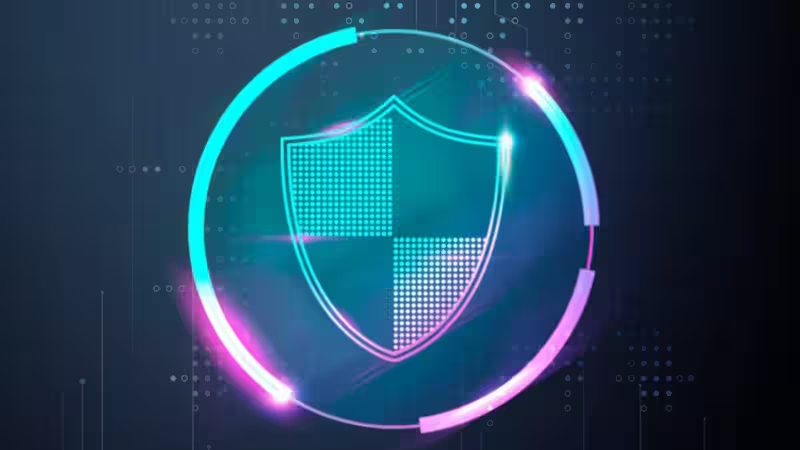Why CVEs are Crucial in Cybersecurity?
In the vast and dynamic world of cybersecurity, safeguarding data and infrastructure from cyber threats is of utmost importance. This is where Common Vulnerabilities and Exposures (CVEs) become indispensable. These uniquely identified security flaws act as alert signals pointing toward vulnerabilities in software and hardware systems. By doing so, they become an integral part of modern cybersecurity strategies. They enable organizations to direct their focus on the most critical security holes that need immediate attention for patching and protection. Thus, for insights into Fortinet vulnerability solutions, organizations can rely on CVEs to build a formidable defense against malicious attacks.
CVEs are more than identifiers; they represent a systematized approach to the ever-increasing complexity of cybersecurity threats. By standardizing the identification and categorization of these vulnerabilities, CVEs allow cybersecurity professionals to speak the same language. This harmonization is critical because it enables coherent and coordinated defense strategies across platforms and organizations globally. As new threats emerge, having a robust framework like CVEs ensures that organizations remain resilient against potentially exploitable weaknesses.
Identification and Classification of CVEs
To ensure the effectiveness of CVEs, the identification and classification process follows rigorous standards overseen by authoritative bodies like the National Vulnerability Database (NVD). Each CVE is assigned a distinctive identifier, making it easy for cybersecurity teams to reference and prioritize action. This systematic process is crucial in vulnerability management, serving as a guiding light for organizations to address and remedy potential threats preemptively.
Understanding the standardized coding and classification of CVEs is essential for maintaining consistency across the industry. This unified methodology allows for efficient communication and collaboration among security professionals. By adhering to these standards, organizations can ensure that they are not only managing current threats effectively but also preparing for potential vulnerabilities that may arise in the future. CVEs continue to bolster overall cybersecurity infrastructure through diligent identification and classification efforts.
Impact on the Current Threat Landscape
The world of cybersecurity is constantly changing, with new threats emerging almost daily. CVEs serve as beacons of awareness in this ever-changing environment, highlighting vulnerabilities that adversaries could exploit. By providing a detailed view of these weaknesses, CVEs empower organizations to take proactive measures, ensuring they stay one step ahead of potential breaches. Recent analyses have underscored the importance of proactive cybersecurity measures, emphasizing the role of CVEs as a cornerstone in defensive tactics.
CVEs’ ability to illuminate unseen vulnerabilities allows security teams to better plan and execute their defense strategies. They not only help identify and patch existing threats but also provide invaluable data that can be used to predict and prepare for future vulnerabilities. By understanding and analyzing CVEs, organizations can adapt to the current threat landscape, refining their cybersecurity postures for maximum effectiveness against potential cyber intrusions.
Effective CVE Management Strategies
Managing CVEs effectively is crucial for minimizing security risks. Organizations must adopt a multi-faceted approach, including regular vulnerability assessments and a timely patch management process. By doing so, they can promptly prioritize and address the most critical vulnerabilities, reducing the risk of exploitation. Automated tools and technologies can serve as vital assets in this process, offering real-time monitoring and insights that enhance overall defensive capabilities.
Organizations aiming to fortify their CVE management strategies should consider implementing the following steps:
- Conduct regular and comprehensive scans to identify emerging vulnerabilities early on.
- Establish a prioritized patch management schedule, focusing on high-severity CVEs.
- Leverage automated solutions for continuous monitoring and rapid response to vulnerabilities.
By taking these proactive measures, organizations can ensure their security posture remains strong and resilient against a constantly evolving threat landscape.
Collaboration and Information Sharing
In the fight against cyber threats, collaboration and information sharing are indispensable. Organizations that engage in such collaborative efforts stand a better chance of staying ahead of adversaries. Platforms like the Information Sharing and Analysis Centers (ISACs) provide essential frameworks for sharing threat intelligence, fostering a collective defense strategy that enhances the security of all participants.
By integrating insights and intelligence from diverse sources, organizations can develop more robust and context-aware security measures. Effective information sharing ensures organizations can quickly react to new threats, using shared data to inform improved defensive tactics. Collaboration is key to creating a unified front against increasingly sophisticated cyber threats, ultimately driving collective success in maintaining a secure digital environment.
The Future of CVEs in Cybersecurity
Looking into the future, the role of CVEs in cybersecurity is set to grow even more critical. As technology evolves, so do the threats we face, necessitating the advancement of CVE capabilities. There will likely be significant progress in detection technologies, leading to faster identification and classification of vulnerabilities. A greater focus on comprehensive vulnerability coverage will also emerge, ensuring protection keeps pace with technological innovations.
By forecasting developments in CVEs, organizations can better prepare for future challenges and refine their security strategies accordingly. Predicting and adapting to new vulnerabilities is essential for remaining vigilant against threats, and CVEs will play an invaluable role in providing the insights needed for this adaptation. The evolution of CVEs will ensure ongoing improvement in cyber defenses, helping organizations stay resilient against emerging security risks.
